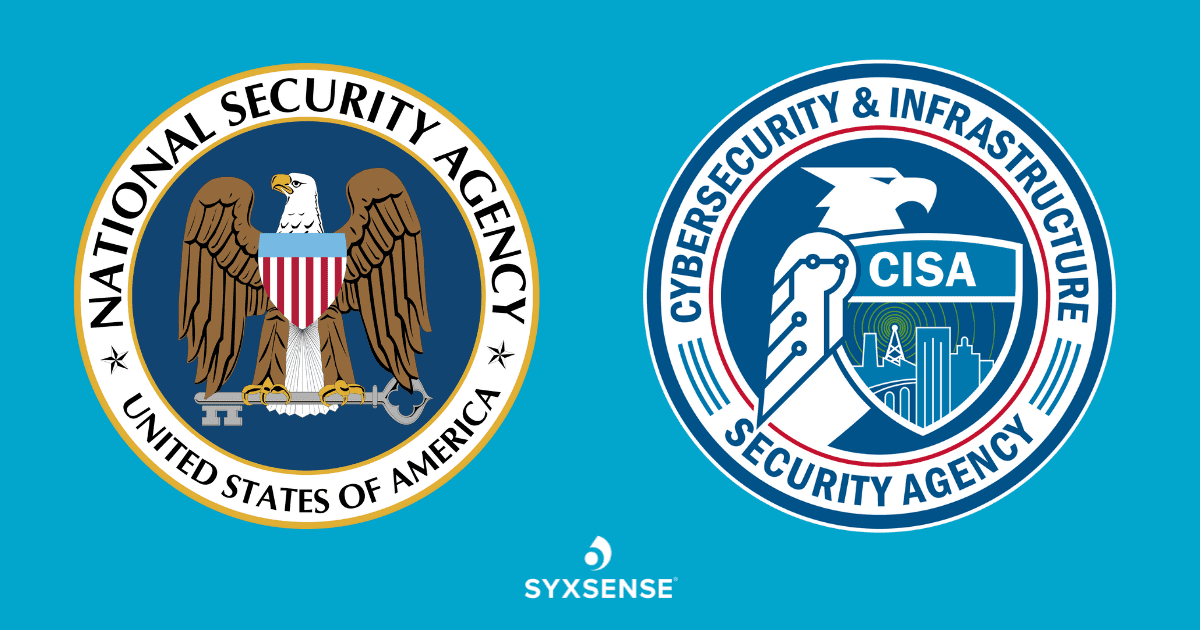
As we welcome the crisp air and falling leaves of October, we also embrace National Cyber Security Awareness Month (NCSAM) – a time for individuals and businesses alike to reflect on the importance of securing their digital information. As our world becomes increasingly interconnected, the need for robust cybersecurity measures has never been more critical. This month serves as a reminder to prioritize and enhance our cybersecurity practices, ensuring the safety of our digital lives.
If NSA & CISA say it’s important…it probably is.
As part of NCSAM, the U.S. government’s National Security Agency (NSA) and Cybersecurity and Infrastructure Security Agency (CISA) issued a joint cybersecurity advisory , highlighting the criticality of patch management and the need to keep systems updated for all organizations. The advisory warns of an increased risk of cyberattacks exploiting known vulnerabilities in software that has not been properly patched or is unsupported.
The advisory underscores an often overlooked but crucial aspect of cybersecurity: poor patch management. Many organizations neglect regular patching due to several reasons. These can include lack of technical resources, risk of disrupting business operations, and in some cases, sheer negligence. Moreover, patch management is often seen as a tedious, time-consuming process that requires a high degree of manual input. However, the consequences of not patching vulnerabilities can be severe, resulting in data breaches, financial losses, and damage to an organization’s reputation.
In the same vein, the use of unsupported operating systems and outdated firmware presents a significant risk. Organizations may often continue to use these systems due to cost concerns or compatibility issues with newer versions. However, this poses a significant security threat, as unsupported systems are no longer receiving security updates and patches from vendors. This leaves them vulnerable to known attacks, making them easy targets for cybercriminals.
What can you do about poor patch management?
To address these concerns, organizations must prioritize patch management and regularly update their systems with the latest security patches. Oftentimes, companies will delay or push off funding for patch management needs. Unfortunately, this only compounds the risk of cyberattacks. All it takes is one unpatched vulnerability for a hacker to gain access and cause significant damage.
Additionally, proper risk assessments should be conducted to identify which systems require immediate patching and which can wait for scheduled maintenance windows. At Syxsense, another factor we use for assessing risk is the footprint of that vulnerability or bug across your organization. If it’s a high-severity vulnerability on only 5 devices, it may be less critical to deal with right this second. However, if you have a medium-severity vulnerability across 1,000 devices, you will want to patch that quickly. By implementing a comprehensive patch management strategy, organizations can significantly reduce the risk of data breaches and protect their systems from potential cyber attacks.
It is essential to establish clear policies and procedures for patch management within an organization. This includes defining roles and responsibilities, establishing timelines for patching, and regularly monitoring the effectiveness of the patching process.
Get ahead with “patch automation”
The sheer volume and velocity of patches released every month can make the task of maintaining up-to-date systems a daunting one. With patches being released at an unprecedented rate, it becomes increasingly difficult for IT teams to keep pace and ensure that all systems are promptly updated, potentially leaving them vulnerable to cyberattacks.
But this isn’t a reason to give up. Organizations should consider investing in automated patch management tools to streamline the process and reduce the burden on IT teams. These tools scan systems for vulnerabilities and can automatically apply patches based on an organization’s policies. This automation ensures that critical security updates are not missed or delayed, reducing the window of opportunity for cyber attacks.
Another crucial aspect of maintaining secure systems is regularly updating third-party software and firmware. Third-party software, like Oracle, Adobe, and Chrome, have been used as attack vectors previously. Firmware is a type of software that controls the basic functions of these devices and can also contain security vulnerabilities. By keeping third-party software and firmware up to date, organizations can ensure that any potential flaws are addressed quickly.
Automated patch management tools also allow for better tracking and reporting of patching activities. This information can be vital in determining the effectiveness of the patch management process, identifying areas for improvement, and providing evidence of compliance with regulatory requirements.
Platforms like Syxsense offer an automated patch management solution that seamlessly integrates with your organization’s infrastructure, ensuring your systems are consistently updated with the latest patches. This not only mitigates the risk of cyberattacks but also saves valuable time and resources. Additionally, by providing support for a range of operating systems and firmware, Syxsense ensures your organization is secure, irrespective of the diverse technology landscape.
This National Cyber Security Awareness Month, why not pledge to prioritize patch management? The NSA and CISA would certainly support improving your patch efforts. And what’s more, with the help of automated patching platforms like Syxsense, we can navigate the digital world more confidently, knowing our information is safe and secure.







